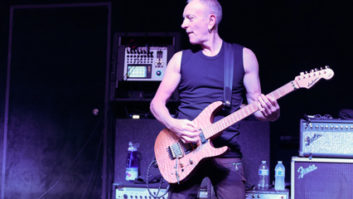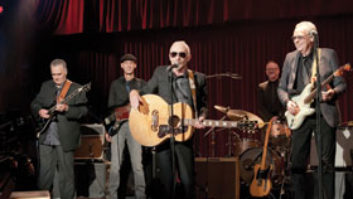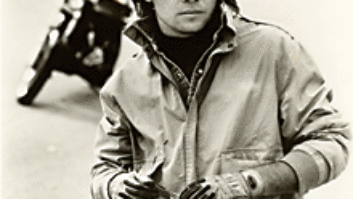Sometimes a ready-made story, a good one, just falls into my lap. No pitches from publicists; no looking ahead to see who has a record coming out or who is on tour; no enterprise reporting on the State of the Industry or Trends in Post-Production. Just a good story that I stumble on by being out in the world and interacting with people. In journalism, that type of story is considered Found Gold. On a recent run through Nashville, I found gold at Belmont University.
The embarrassing part is that I could have easily missed this month’s cover story, a two-years-in-the-making expansion of the Mike Curb College of Entertainment and Music Business, culminating in the construction of a four-story building housing multiple post-production rooms, centered around the world’s first university-based Dolby Atmos mix stage. It’s a big story, with tentacles reaching into production, education, workflow and IT-style networked audio. And if Pat McMakin hadn’t casually suggested that we “stop by for a quick run-through after lunch,” it likely wouldn’t be in front of readers today.
I was visiting McMakin, head of Ocean Way Studios Nashville (owned by Belmont), while in town on my travels preparing for Mix Nashville in August. He invited me by the studios to sit in on a 70-piece scoring session for the new Star Wars video game; he was feeling particularly proud, as bringing videogame scoring to Tennessee had been a five-year quest, with lots of visits out West, and it was paying off. The room was full, the cues spot-on and there was even a Belmont grad behind the board. He introduced me to Barbara Doyle, new head of the Motion Pictures department, recently transplanted from Southern California. Then we went out for Thai food off Music Row.
During the meal, he told me about the new building on campus—state-of-the-art everything, with an Atmos stage, a shooting stage, green screen, motion capture, anechoic chamber, 24 edit suites and computer labs. And new offices for staff! And this is in addition to Belmont’s extensive studio facilities already in place, from on-campus to Ocean Way to Columbia Studio A to Quonset Hut. We should stop by real quick if I had a second, he said. I did, and we did. Wow.
It had only been opened two weeks and the parking lots still smelled fresh! I met some people, ran through video control rooms, audio suites, the future home of the Foley pits, and then the Atmos stage, large enough to rival anything in Hollywood, with an Avid S6 at the center and custom JBL monitoring throughout. All rooms are connected with an extensive Focusrite RedNet system, which seems perfectly suited for an educational environment. The idea was to bring all the departments surrounding Media Studies under one roof, fostering collaboration and shared workflow, from screenwriting to shooting to post to marketing/business. It seems a simple concept; it sure is elegantly integrated.
Pat followed up by introducing me to his longtime friend and fellow mid-1970s Belmont grad Doug Howard, who was appointed Dean of the Curb College the previous January after some 30 years in the business along Music Row and 20 years on the Belmont advisory board. Howard quickly deflected all credit to his predecessor as dean, Dr. Wesley Bulla, and his team that included Ron Romano, Michael Janas, and the brand new Dave Warburton. Then he arranged the interviews, took some nice photographs, and a story came to life.
It’s not always that simple, nor is Found Gold always a big juicy nugget like Belmont University on the eve of its 125th anniversary celebration. But when you’re out in the world, bumping into people who are in their element, good things can happen.
Tom Kenny, Editor, Mix magazine




